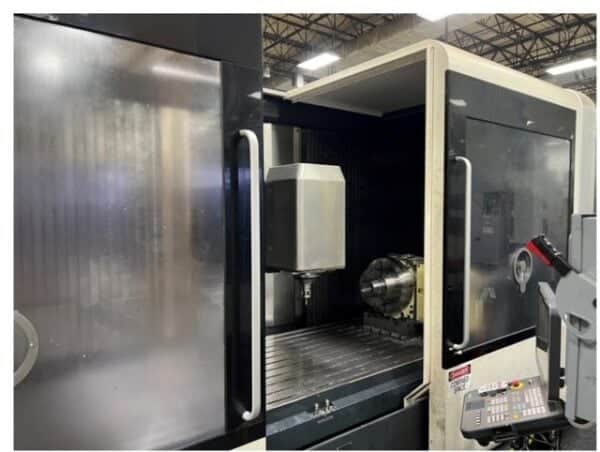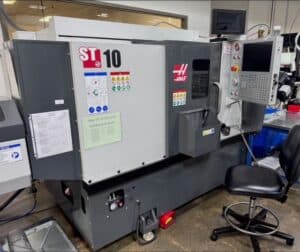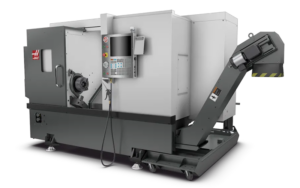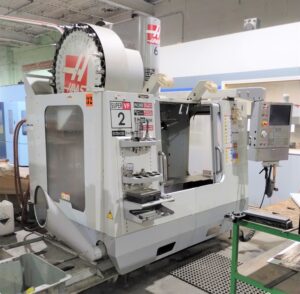Precision at Its Best
In aerospace, the need for high-precision parts is huge, making 5-axis machining a must-have. This piece takes a closer look at how this cool tech is changing the game in making everything from turbine blades to aircraft parts, plus we’ll touch on the newest cnc machine advances and best industry practices.
The Evolution and Fundamentals of 5-Axis Machining in Aerospace
5-axis machining has been a major leap in aerospace manufacturing. Unlike the older 3-axis machines that only move along X, Y, and Z lines, 5-axis machines can rotate, which allows tools to work on the material from almost any angle. This makes it possible to create tricky shapes in one go, stuff that standard machines would find super tough to handle.
Since it first started, this technology has come a long way. Nowadays, 5-axis machines are equipped with super smart controls that can work all five axes together with amazing precision. This is so important in aerospace, where parts have to be perfect in terms of size and strength. For instance, turbine blades need to have super tight surface finish tolerances, often as close as ±0.0001 inches, and 5-axis machining is the way to get there reliably.
Today’s 5-axis machines for aerospace use fancy features like thermal compensation, powerful spindles that can hit up to 30,000 RPM, and smart CAM software that helps avoid tool collisions while figuring out the best tool paths. These additions, along with solid construction and precise ball screw systems, ensure the parts maintain their necessary accuracy and stability.
Applications and Technical Implementation
In the world of aerospace manufacturing, 5-axis machining is key for making critical components. Turbine blades are quite a challenge because they need intricate curved surfaces that can handle intense conditions. The process kicks off with a solid block of high-performance alloy, like titanium or nickel alloys, which is then shaped into complex airfoil designs.
Another place where 5-axis machining shines is with structural parts. Aircraft frames and engine mounts often need to be made with clever designs that have varying thicknesses and detailed internal features. This tech helps create these parts with the best strength-to-weight balance, which is super important for efficiency and performance. Some modern aircraft brackets can be made up to 60% lighter than older ones without losing strength.
To implement this successfully, there are several technical details to think about. Picking the right cutting tools is crucial, and many aerospace applications often use special carbide tools with advanced coatings meant for high-temperature alloys. Tool path plans need to be carefully thought out to keep cutting conditions steady and avoid tool bending, which could mess up the part. Also, solid fixturing is super important, leading many shops to design custom supports that allow full access to all part features without compromising stability.
Quality Control and Certification Requirements
The aerospace industry has strict quality standards, so there are detailed inspection and certification processes for 5-axis machined parts. New quality control systems work hand in hand with the machining process, using in-process probing and real-time tracking to check on important dimensions and surface quality. These systems often include high-tech measuring tools like coordinate measuring machines or CMMs, which can check accuracy to ±0.0001 inches.
Certification for these parts usually follows the AS9100 standards, which build on regular ISO 9001 rules with extras specifically for aerospace. This means keeping detailed records of processes, tracking materials, and making sure operators are trained. Many facilities are now using digital twin tech to simulate machining processes before anything is cut, which helps catch big mistakes and ensures parts are right the first time.
Statistical process control (SPC) is also super important for keeping quality consistent. More advanced shops keep thorough records of key parameters and look for trends to foresee and fix potential problems before they mess up part quality. This data-driven method is a lifesaver in meeting the high reliability needed for aerospace components.
Conclusion
The use of 5-axis machining in aerospace is always changing and improving, thanks to better machines and smarter quality assurance methods. As the industry works towards making parts more efficient and lighter, 5-axis machining is becoming even more vital. Looking ahead, exciting advancements like AI-driven process tweaks and new material development are set to take this essential tech even further.
The success of 5-axis machining in aerospace shows just how important it is to invest in futuristic manufacturing tech. For leaders in manufacturing, grasping and using these capabilities is key to staying competitive in this intense field. As the industry keeps evolving, blending 5-axis machining with other advanced manufacturing tools could open new doors for innovation and efficiency in making aerospace components.
View our Used CNC Machines For Sale



